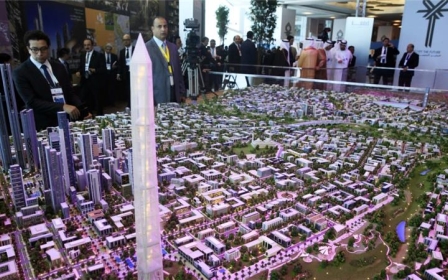Egypt's tourism industry begins to show signs of recovery

Tourists are slowly returning to Egypt, easing pressure on a key sector battered by years of turmoil and the 2015 bombing of a plane carrying Russian holidaymakers.
"There is an increase in the number of tourists. The situation was much better in January than in previous years," tourism ministry spokesperson Omaima al-Husseini said.
Visitors from China, Japan and Ukraine account for a large part of the growth.
China's top public travel agency, China International Travel Service, reported a 58 percent increase in tourists flying to Egypt compared with 2015.
"There are more bookings between October 2016 and January 2017 than last year," said Egyptian Federation of Tourism chief Karim Mohsen.
"There is an improvement, especially in cultural tourism in Cairo, Luxor and Aswan," key historical sites, he said.
The uptick is a hopeful sign for a country also reeling from the shock of an economic reform programme that has triggered massive inflation.
Once a key source of foreign currency, the tourism sector crashed in 2011 after a popular uprising overthrew president Hosni Mubarak, ushering in years of sporadic unrest.
Violence scuppers recovery
Recoveries in the sector since then have been set back by new crises.
In June 2015, a massacre of tourists at a Luxor temple was narrowly averted when assailants armed with assault rifles and explosives bungled the attack and were intercepted by police.
Then, in September that year, Egyptian forces mistakenly targeted a group of Mexican tourists visiting desert sites with repeated air strikes, killing 12 people.
The next month, Islamic State militants, who are waging an insurgency in the eastern Sinai Peninsula, struck again.
They bombed a Russian airliner carrying holidaymakers home from the popular Red Sea resort of Sharm el-Sheikh.
All 224 people on board were killed. In the aftermath, Russia suspended flights to Egypt and Britain cut air links with Sharm el-Sheikh.
Visitor numbers plunged from 9.3 million in 2015 to 5.3 million the following year, Husseini said.
But industry officials have cautiously welcomed what they say is a noticeable improvement since October.
In December 2016, 551,600 tourists visited Egypt, compared with 440,000 the year before, according to the government's statistics agency.
"Activity has picked up a bit in the winter of 2016-2017," said Tamer al-Shaer, vice president of the Blue Sky travel agency.
He said that included a 30 percent increase in Ukrainian tourists and a 60 percent increase in visitors from China, with daily flights to Aswan, a southern city rich in ancient sites.
Japan's HIS travel agency said the number of tourists heading to Egypt had "multiplied by four to five times" last year.
Since charter flights from Japan to Egypt resumed in April 2016, they have been on average 80 percent full, said a spokesperson for the Japan Association of Travel agents.
Tourism 'paralysed' until Russians return
Egypt hosted a record 14.7 million foreign tourists in 2010, a year before Mubarak's overthrow and the ensuing economic nosedive.
Restoring even two thirds of that number is a key government goal, but it hinges on Russia and Britain resuming flights, Husseini said.
"There are ongoing negotiations... we hope the issue will be resolved as soon as possible," she said.
More than 60 percent of tourists arriving in Sharm el-Sheikh by plane used to come from Britain or Russia.
"So long as the Russians do not come back, there will be paralysis," the tourism federation's Mohsen said.
"Russians and Britons are the backbone of Sharm el-Sheikh."
Other European countries such as Germany and France have registered a slight increase in reservations to Egypt.
In early February, four other European countries - Denmark, Finland, Norway and Sweden - eased travel warnings against travel to south Sinai, where Sharm el-Sheikh and other resorts are situated.
Middle East Eye propose une couverture et une analyse indépendantes et incomparables du Moyen-Orient, de l’Afrique du Nord et d’autres régions du monde. Pour en savoir plus sur la reprise de ce contenu et les frais qui s’appliquent, veuillez remplir ce formulaire [en anglais]. Pour en savoir plus sur MEE, cliquez ici [en anglais].




